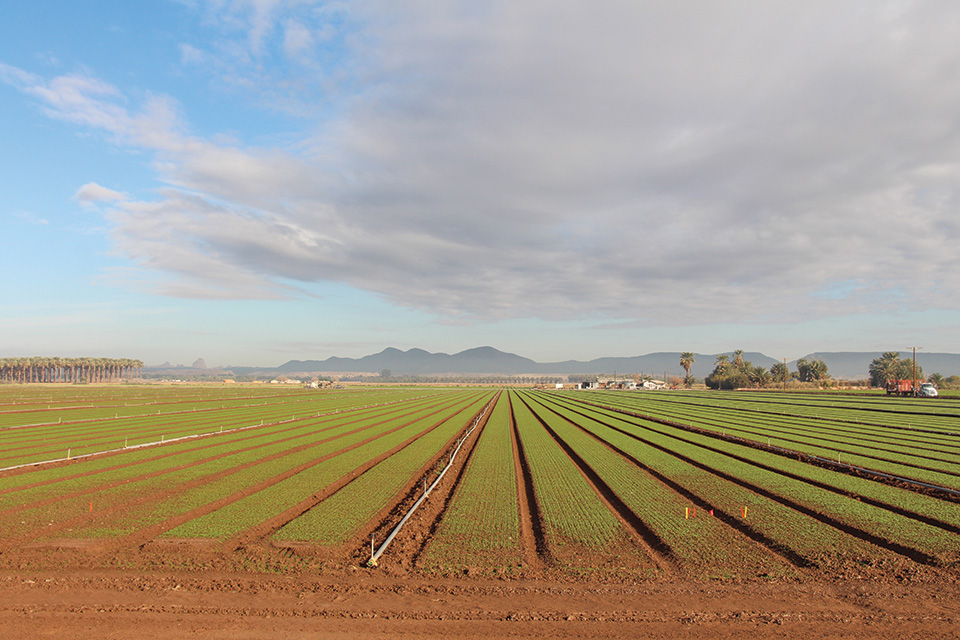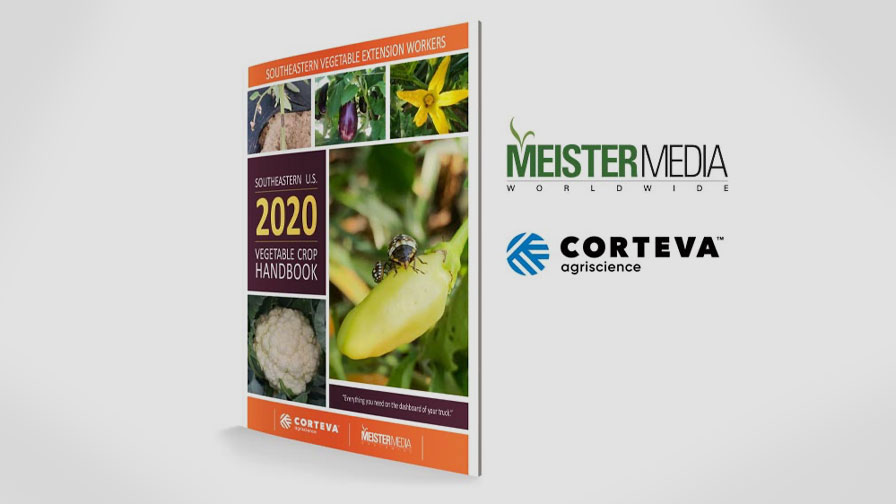How Top Flavor Farms Succeeds

By giving up a small amount of production space to a semi-permanent irrigation pipe, Top Flavor avoids relaying pipes in crop with short harvests.
Top Flavor Farms has a great reputation in the industry for quality, innovation, and advocacy. What does it take to reach that level of success?
In Top Flavor’s Farm Manager, Michael Clements’ view, its three things: passion, innovation, and crop diversity.
Passion. The leadership team nurtures a sense of passion for growing throughout the company.
Innovation. “We are constantly trying out new ideas on the ranch. Some of them work, some of them don’t, but you take some bit of knowledge away from every attempt,” Clements says.
Crop Diversity. By growing a wide range of crops, Top Flavor has a lot of options for crop rotation.
“This is imperative in our soil health and gives us many tools to combat different issues we run into on the ranch,” he says.
In Clements view, getting everyone comfortable with change is key.
“Some people are hesitant, but we’re constantly changing things. We rarely do things the same way two years in a row,” he says.
Which gets back to the first item on his list of what makes Top Flavor successful: passion. Only when you have buy-in will you be able to see if your ideas really work.
Two Innovations That Worked
It’s in a grower’s nature to find clever solutions on the fly. Top Flavor has developed ways to evaluate and adapt to smart ideas. A couple of recent experiments showcase how the farm’s vetting process works.
1. Dead Bed Project
Goal: Reduce the labor required to lay irrigation pipes between crops.
How It Works: Top Flavor created a narrow bed within a field configuration that holds the irrigation pipes instead of crops.
“This configuration gives us the opportunity to do any and all tractor work needed in the field without the need of removing or handling the pipe,”Clements says.
The irrigation pipes stay in place during bed preparation, planting, transplanting, cultivation, tractor sprays, harvest, and tilling of the soil for a second planting during the season.
More Advantages: Crews can set up the irrigation system any time before the first crop goes in. Setting up in advance allows for more flexible labor scheduling.
Is It Working?: “I’m losing 7.5% [of production space in each field], and that can add up,” Clements says.“But the small reduction of acreage we lose to this configuration is offset by labor savings.”
Top Flavor started with a test field five years ago and is now using it in all crops where it makes sense, such as early fields with short-term crops like lettuce and radish. Long-season crops like cabbage, naturally, wouldn’t benefit from the configuration.
Although Top Flavor has seen a reduction in labor over the years of testing, it’s still evaluating results.
“From a farming standpoint it is a success, but the full picture will be seen in the coming years as labor costs increase due to California’s minimum wage and changes in overtime laws for agriculture labor,” Clements says.
2. Reduced Tillage Project
Goal: To reduce the number of tractors, operators, and fuel needed to till the soil.
How It Works: “Essentially, we went to one big tractor and one attachment that does a lot of different tasks in one pass,” Clements says.
Is It Working?: Since the financial benefits were obvious, Top Flavor measured success by evaluating the crops in the years after the change. They didn’t see any change or problems with compaction and declared success.









